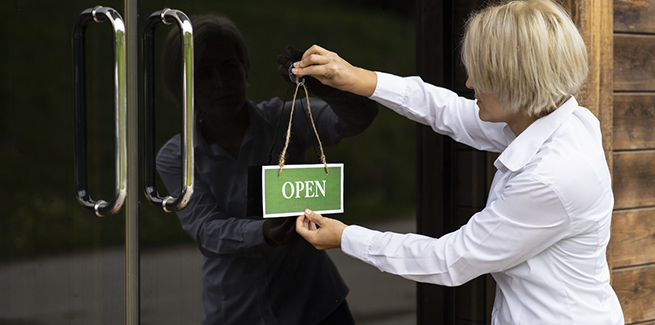How to safely reopen your hospital

Back in the early days of the pandemic, people talked about the future in terms of “when things get back to normal.” Not anymore. Now they talk in terms of the “the new normal,” and what that’s going to look like.
For many animal hospitals, the new normal is already here.
If you’ve been doing curbside service, you’re already practicing many new safety protocols to prevent the spread of coronavirus. Those protocols—most of which you’ll need to maintain for the foreseeable future—will continue to define your new normal as you gradually move your practice from curbside to inside.
But how exactly are you going to do that?
One source is “COVID-19: A Guide to Reopening Veterinary Medicine in Ontario,” an in-depth guide on how to safely reopen a veterinary hospital prepared by J. Scott Weese, DVM, DVSc, DACVIM, and the Ontario Veterinary Medical Association. (And don’t worry if your hospital’s not in Ontario—we’ll get to that.)
NEWStat reached out to Weese, who is also an associate professor in the Department of Pathobiology at the University of Guelph (UG) in Ontario, Canada, and a contributing reviewer of AAHA’s Infection Control, Prevention, and Biosecurity Guidelines, to find out more about reopening hospitals safely and what that new normal is going to look like.
NEWStat: The document mentions reopening veterinary medicine in Ontario. Is there any reason these recommendations wouldn’t work for hospitals in the US as well?
J. Scott Weese: No, they’re pretty generic. They’re framed around planning based on changes in restrictions in Ontario, but the concepts would apply anywhere.
NEWStat: You talk about hospitals planning for when clients will be allowed to enter the hospital regularly. Can you briefly summarize what the most important considerations should be at that time? How will they be different from the precautions you’re recommending now?
JSW: The document largely goes over what we’ll need to think about as we move toward more interactions. The key will still be social distancing, with a range of things needing to be considered to maximize distances between us and clients, and to keep clients apart. The other aspect is working in situations where we can’t do that (some client interactions, working with coworkers, etc.). We’ll need to continue to take steps to maximize separation from people (clients, visitors, coworkers, and the like) and use PPE and other barriers when [separation is] not possible.
NEWStat: You mention that veterinarians are at the forefront of risk groups, both because of potential contact with animals owned by people with active COVID-19 and the risk of exposure to animals who may themselves have COVID-19 (however rare that may be). That’s a big potential double whammy. What are the most important precautions veterinary professionals can take to minimize that risk?
JSW: The biggest risk we have is people. We have potential contact with a lot of people on a daily basis, and that can be close contact (e.g., [a client or team member] holding an animal while we’re examining it, being together and talking in a small exam room). Human contact is our biggest risk. As we [continue to control] that really well, the potential role of animals becomes relatively more important, but as we drift back to more situations where there might be human contact, the human exposure–prevention aspects become critical.
NEWStat: What are the most important takeaways from your plan?
JSW: Plan ahead. Be at the front of the curve to protect yourself, your staff, your clinic, and your clients.
Be opportunistic and creative. Some changes we have made, and have to make in the near future, may be permanent, sometimes by necessity but also because we might find some are good for clinics, veterinarians, owners, and business (e.g., telemedicine, some contactless visits, changes in waiting rooms and owner interactions).
Think long term. This isn’t a short race; it’s a marathon—and we’ll have to take measures for a long time.
Photo credit: © iStock/Vladimir Vladimirov



